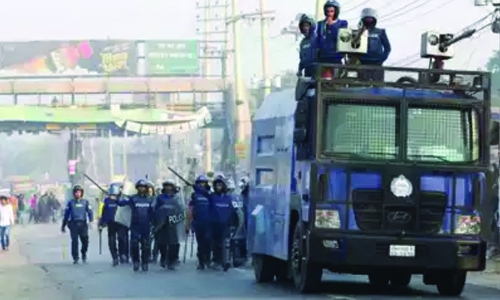Chinese worker killed in B’desh construction site clash
Hundreds of Chinese and Bangladeshi labourers clashed at the site of power plant being built south of Dhaka, police said yesterday, leaving a Chinese worker dead and more than a dozen others injured. Police said the violence was triggered by the death of a Bangladeshi worker at the site of a China-funded 1,320-megawatt plant, prompting locals to accuse the Chinese of trying to cover up the incident.
At one point, hundreds of Bangladeshi and Chinese workers were fighting at the site -- about 200 kilometres (125 miles) south of the capital -- and more than a dozen were injured, including six Chinese who were taken to hospital. “One of the Chinese workers later died in the hospital. He had injuries to his head,” local police chief Monirul Islam told AFP, adding it took over 1,000 policemen to restore calm.
China is a close ally of Bangladesh, and Chinese state-run and private firms have invested billions of dollars in the South Asian country’s infrastructure projects -- mostly in power, energy and transport sectors. The presence of large numbers of Chinese workers in Bangladesh, as in other countries where Beijing is investing heavily, has caused some tensions with locals, and officials said similar clashes occurred a year ago.
Police said more than 6,000 people -- including some 2,000 from China -- work at the power plant site. Regional administrator Ram Chandra Das told AFP that authorities have ordered a probe into the incident. “The situation is now calm,” he said, adding no arrests had been made. In April 2016, four people were killed after police opened fire on villagers protesting against the construction of two China-backed power plants in southeastern Bangladesh.
In October that year Chinese President Xi Jinping made a historic visit to Bangladesh and the two countries signed $20 billion worth of loan agreements. The latest clashes come just weeks before Bangladesh Prime Minister Sheikh Hasina is to visit Beijing. China’s investments in Bangladesh are part of Xi’s signature Belt and Road Initiative.
Related Posts

